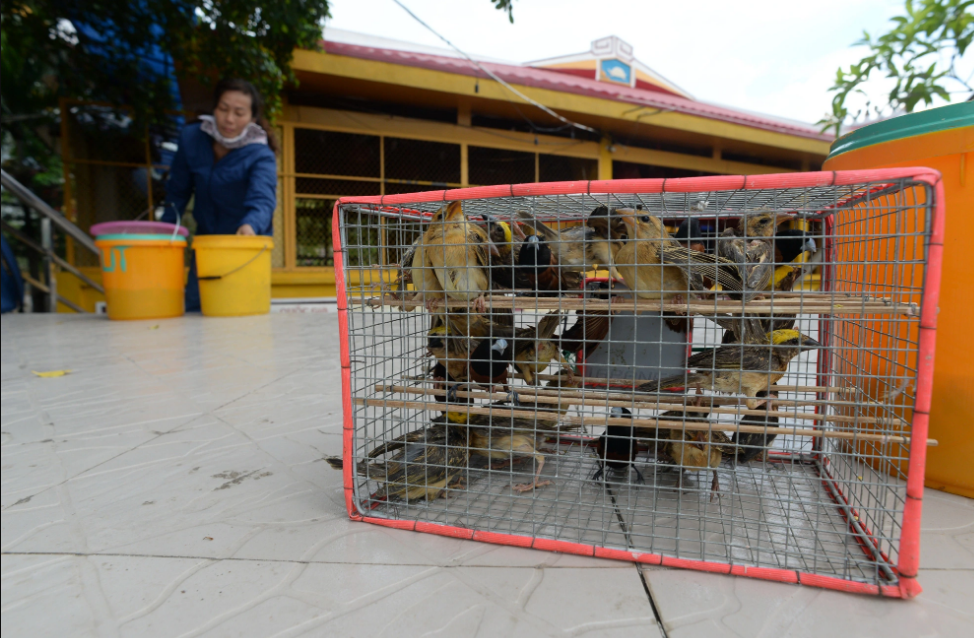Scientifically, the marine ecosystem will be in danger if ‘life release’ practitioners buy fish and turtles from farmers to conduct the traditional rite, which was once considered a Buddhist ritual of mercy.
Deep understanding of life release
According to many Buddhist stories, the rite of life release means saving and freeing ailing and captive animals, as well as those suffering torture and smuggling.
Rescuers spend their money buying these animals, cure and feed them, and then release them in healthy condition into the wild.
These steps reflect humanitarian efforts and the correct way to observe the rite of life release. In fact, they are suitable for natural science.
Worldwide wild animal rescue centers have been saving animals from illegal captivity, recovering their living ability in nature, and bringing them back to their habitats.
These activities are called ‘reintroducing wild animals to the wild,' not simply as life release.
The fishery sector often experiences the release of baby fish and shrimp into the water to regenerate marine resources. These animals have clear origins and no diseases.
The release of birds, fish, turtles, crabs, shrimp, and shellfish was believed to date back hundreds of years, mainly practiced by Chinese followers of Buddhism.
The practice is aimed at taking back luck.
Before releasing animals back into nature, Buddhists traditionally pray and read scriptures.
Non-scientific life release practice
Over the past few years, in some pagodas in Vietnam, Buddhists and monks have released birds, fish, and turtles in droves into the wild on the 15th day, or the full-moon period, of each lunar month.
That mainly occurs in the seventh lunar month, known as Vu Lan, a festival honoring deceased ancestors and filial piety, observed by Buddhist followers.
Life release practitioners buy a huge amount of fish and turtles from farmers to release them to rivers and lakes. However, these creatures may be too much for the ecosystem.
In front of several pagodas, the streets and sidewalks are often crowded by vendors and traders of birds. They are kept hungry in narrow cages. Meanwhile, many have their wings cut.
The majority of wild birds are hurt by hunters.
Each area in the marine environment boasts certain species with a limited food source.
If people release numerous species of fish, such as catfish, basa fish, carp, and snakehead fish, as well as red-eared slider turtles, crabs, and suckermouth catfish into the same area, the marine ecosystem will become imbalanced.
As a result, many species will die due to a severe shortage of food, diseases, poisoning, and hypoxia.
Domesticated animals, after being released into the wild, could be unable to find food and prey, and have a weak ability of defending themselves. They will die from hunger, or will be attacked by other wild animals.
Meanwhile, ferocious red-eared slider turtles, crabs, and suckermouth catfish could attack native species, leading to a weaker marine ecosystem.
As for birds, after being freed, they will be exhausted due to hunger, and can be recaptured easily for trading.
Life release could cause the death of baby birds, as during the nesting season, parent birds are captured for the rite, resulting in the perishing of their babies.
In addition, domesticated fish infected with diseases and viruses can quickly spread such illnesses to other species after being freed into the wild.
To earn such easy money, several plunge the marine ecosystem and wildlife into danger.
In addition, monks and Buddhists equipping themselves with no masks, gloves, and sanitizer can catch some ailments such as sarcoptic mange, ringworm, Ebola virus, and monkeypox from these animals when they practice the rite of life release.
Years ago, authorities in New York discovered Chinese people releasing some turtles infected with salmonella, a type of bacteria that makes people sick if they eat food that contains it.
In the United States and some European nations, life release practitioners can be fined, or sentenced, if they fail to secure a life release license.
Some Buddhist monks have recently warned Buddhist followers against non-scientific life release, advising them not to buy birds and turtles captured in nature or domesticated fish.
It is vital to eliminate the rampant and unscientific practice of life release to protect wildlife.
Many pagodas in Vung Tau City in the southern province of Ba Ria – Vung Tau were seen surrounded by vendors of birds on Wednesday, or the Vu Lan festival.
A female vendor told Tuoi Tre (Youth) newspaper that she traveled to Vung Tau City from Dong Nai Province, some 85 kilometers away, early in the morning to buy birds for life release.
Each bird sold for VND25,000 (US$1.03).
Like us on Facebook or follow us on Twitter to get the latest news about Vietnam!




















































